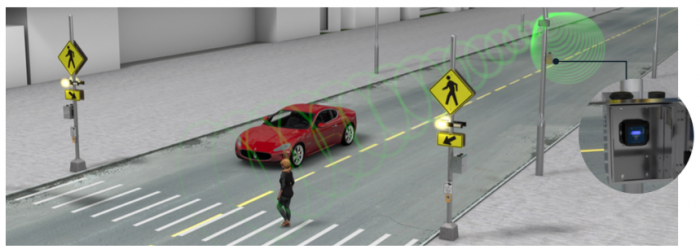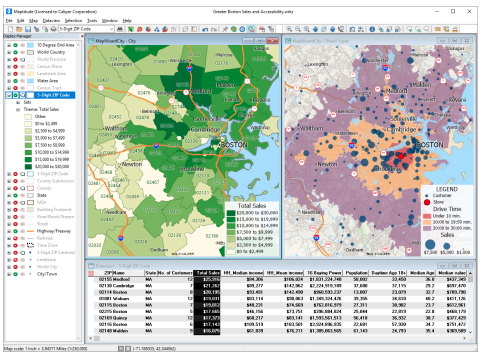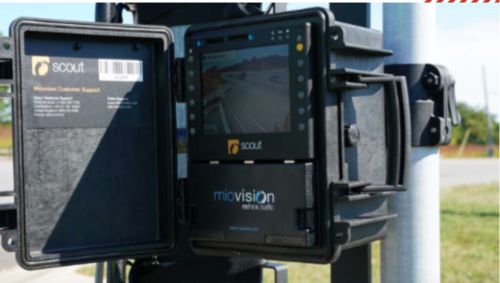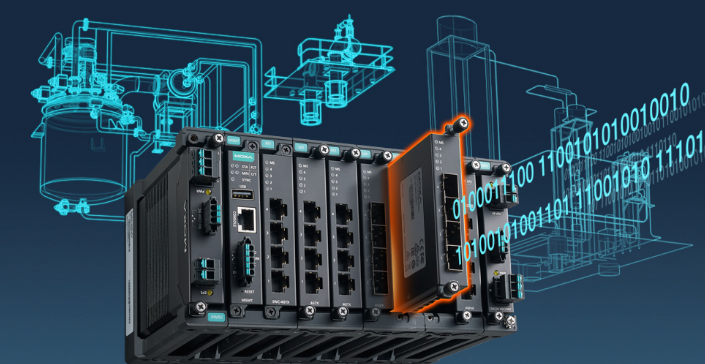Introduction
Safety of motorists, cyclists, pedestrians, and road infrastructure is a challenge. Safety warning signs have become dormant to the extent that motorists do not recognize them quickly. The traditional/conventional traffic warning signs can push safety performance up to only 53%. Now we need to take road safety to 90% performance by deploying intelligent road signs with embedded beacon blinkers to draw road user’s attention to risks. Relationships with Tapco, Vitronics and Daktronics provide us platform to offer the best safety solutions on our roads. Below are solutions we offer:
- Road Safety Devices
- Intelligent Warning Signs
- Smart Work Zone Protection
- Personal Protective Equipment
- Road and Door Access Control
- Pedestrians Crosswalk
- In-Road Warning Lights
- Wrong-Way or One-Way
- Dynamic Curve Warning
-
Pedestrian Crosswalk Solution
 Install Pedestrian Crosswalk Solution at intersection and black spots to provide blinker warning to drivers when pedestrians are in or about to enter a crosswalk space. Educate Pedestrians on how to activate the stop button on the pedestrian pole to activate the pedestrian crosswalk warning sign for drivers to see and stop for them. Illuminate the crosswalk space with light so pedestrians can see their path at night time. Do not allow you citizens road across multi-lane streets, save their lives.
Install Pedestrian Crosswalk Solution at intersection and black spots to provide blinker warning to drivers when pedestrians are in or about to enter a crosswalk space. Educate Pedestrians on how to activate the stop button on the pedestrian pole to activate the pedestrian crosswalk warning sign for drivers to see and stop for them. Illuminate the crosswalk space with light so pedestrians can see their path at night time. Do not allow you citizens road across multi-lane streets, save their lives.
Since no pedestrian crosswalk solutions are available on our roads, pedestrians ignorantly run in fear to cross and eventually colliding with moving vehicles. Traffic Officers will always blame pedestrians and cyclists for not being careful. Unfortunately, there are no means/solutions to encourage careful behaviour, particularly for the elderly, disabled, school children and first time visitors to the city.
2. In-Road Warning Lights
 Implement In-pavement lights to alert motorists to the presence of pedestrians actively crossing or preparing to cross the street. The amber lights are embedded in the pavement on both sides of the crosswalk and oriented to face oncoming traffic. In-road LED markers produce a bright, daytime- visible light focused directly in the driver’s line of sight clearly indicating the curve, hazard, crosswalk, variable lane, or lane edge.
Implement In-pavement lights to alert motorists to the presence of pedestrians actively crossing or preparing to cross the street. The amber lights are embedded in the pavement on both sides of the crosswalk and oriented to face oncoming traffic. In-road LED markers produce a bright, daytime- visible light focused directly in the driver’s line of sight clearly indicating the curve, hazard, crosswalk, variable lane, or lane edge.

When the pedestrian activates the system, either by using a push- button or through detection from an automated device, the lights begin to flash in unison, warning the motorist that a pedestrian is in the vicinity of the crosswalk ahead. The flashing LEDs stop after a set period of time required for a pedestrian to safely cross the street.
3. Wrong-Way or One-Way Driving
Intelligent Wrong-Way signs with blinker signs have proven to reduce wrong-way events at notorious wrong-way driver entry points such as:
- Side-by-side highway entrance and exit ramps
- Exit ramps near side streets
- Poorly lit entrance and exit ramps
 Wrong-Way Alert Systems detect wrong-way drivers, immediately activate LED-enhanced flashing alerts and send real-time wrong-way event notifications through software integrations with local Traffic Control Centres for law enforcement communication unit to pick up the incident for violation ticket. The solution provides warning points for drivers to retrace the journey, and where adamant, camera attached to the solution snaps the image of the vehicle and sends to the control room where charges are booked and communicated to vehicle owner via email, sms, etc.
Wrong-Way Alert Systems detect wrong-way drivers, immediately activate LED-enhanced flashing alerts and send real-time wrong-way event notifications through software integrations with local Traffic Control Centres for law enforcement communication unit to pick up the incident for violation ticket. The solution provides warning points for drivers to retrace the journey, and where adamant, camera attached to the solution snaps the image of the vehicle and sends to the control room where charges are booked and communicated to vehicle owner via email, sms, etc.
4. Dynamic Curve Warning Signs
 Sharp curves have been proven to cause accidents to unmindful trailer, trucks, cars, and delivery vehicle drivers. A specific speed is required to smoothly travel such curves to avoid accidents. But many motorists really don’t observe or simply ignore the dangers inherent in speeding inside sharp curves. Very visible warning alerts are required to drive safely on such curves. A wide variety of curve warning solutions increase driver awareness, reduce speeds and keep drivers on the road with: Two-lane rural highway curves; High speed multi-lane expressway curves and Obstructed view highway curves.
Sharp curves have been proven to cause accidents to unmindful trailer, trucks, cars, and delivery vehicle drivers. A specific speed is required to smoothly travel such curves to avoid accidents. But many motorists really don’t observe or simply ignore the dangers inherent in speeding inside sharp curves. Very visible warning alerts are required to drive safely on such curves. A wide variety of curve warning solutions increase driver awareness, reduce speeds and keep drivers on the road with: Two-lane rural highway curves; High speed multi-lane expressway curves and Obstructed view highway curves.
The systems increase driver awareness and safely guide drivers through the length of the curve by flashing Blinker signs upon activation. Engineered to the contours of any curve, systems consist of wirelessly connected LED-enhanced Blinker signs. Various flash activation capabilities including vehicle presence, speed and weather smart detection integrates with advance curve warning alerts. Solar power allows for installation of the solution in remote locations.
5. Free-Flow Toll Collection
 Free-flow toll collection with intelligent vehicle identification systems help minimize revenue leakages. Road toll collection can happen according to vehicle classification and road usage charge without building Toll Plaza. Our toll collection devices are mounted on a variety of structures including: gantries, cantilevers and aesthetic roadside housings. Semi-stationary and mobile deployments are also possible to temporarily tighten or modify an existing tolling network.
Free-flow toll collection with intelligent vehicle identification systems help minimize revenue leakages. Road toll collection can happen according to vehicle classification and road usage charge without building Toll Plaza. Our toll collection devices are mounted on a variety of structures including: gantries, cantilevers and aesthetic roadside housings. Semi-stationary and mobile deployments are also possible to temporarily tighten or modify an existing tolling network.
 Flexible deployment and robust automated number plate registration (ANPR) units enable charging rings and zones to be set up unobtrusively and cost-effectively without impacting traffic flow. The system works independently of the chosen tolling type, and supports back office processes as well as tags and other on-board units.
Flexible deployment and robust automated number plate registration (ANPR) units enable charging rings and zones to be set up unobtrusively and cost-effectively without impacting traffic flow. The system works independently of the chosen tolling type, and supports back office processes as well as tags and other on-board units.
6. Red Light Enforcement
 Intersections are the most complex and dangerous traffic situation of any road infrastructure. Cars, heavy goods vehicles and motorcycles cross each other’s paths and often intermingle with vulnerable road users such as cyclists and pedestrians. These crossing and turning maneuvers result in many vehicle-to-vehicle, vehicle-to-pedestrian, and vehicle-to-bicycle accidents that can lead to serious injuries or fatalities.
Intersections are the most complex and dangerous traffic situation of any road infrastructure. Cars, heavy goods vehicles and motorcycles cross each other’s paths and often intermingle with vulnerable road users such as cyclists and pedestrians. These crossing and turning maneuvers result in many vehicle-to-vehicle, vehicle-to-pedestrian, and vehicle-to-bicycle accidents that can lead to serious injuries or fatalities.
Red Light Enforcement Solution is very helpful. When a vehicle approaches or enters designated zone during a red-light phase, Red Light solution reliably documents the violation including information on the red violation time, that is, the time span that passed since the traffic light turned red. The solution is able to monitor multiple lanes and multiple vehicles from its mounted position. Through continuous LIDAR position determination, the system detects and documents all red light violations on intersections. It additionally documents speed violations during all traffic light phases. Optional remote cameras could be integrated to record images or videos showing vehicles and traffic lights at the violation time. Key features include:
- No in-road sensors required;
- Simultaneous monitoring of red light and speed violations;
- Monitoring of one or two driving directions;
- Infrastructure is beautiful to see in the city’s landscape;
- Secondary video evidence makes good legal case;
- Infrastructure is very affordable and easy to implement.
7. Mobile Speed Enforcement
It has always been a challenge for police and Traffic enforcement officers to monitor speed and vehicle licence plate number compliance on-the-go. Machine vision technology offers three variants to achieve this. Each is extendable with a remote camera or documentation unit for bidirectional enforcement or secondary video evidence.
Mobile Enforcement: Tripod.
 The mobile enforcement camera, easy to set-up mobile deployment on a tripod allows for unobtrusive speed enforcement. It is fully automated, unattended use without manual site calibration and operates up to ten hours of mobile enforcement with a single lithium battery box.
The mobile enforcement camera, easy to set-up mobile deployment on a tripod allows for unobtrusive speed enforcement. It is fully automated, unattended use without manual site calibration and operates up to ten hours of mobile enforcement with a single lithium battery box.
Mobile Enforcement: In-Car
 For even faster mobile deployment the camera can be installed in a vehicle, providing extra protection and comfort for the operator. It can be installed in both front or rear of a vehicle for convenient operations. Automated enforcement, allows the operator to concurrently work n case files It is extendable for bidirectional enforcement or secondary video evidence.
For even faster mobile deployment the camera can be installed in a vehicle, providing extra protection and comfort for the operator. It can be installed in both front or rear of a vehicle for convenient operations. Automated enforcement, allows the operator to concurrently work n case files It is extendable for bidirectional enforcement or secondary video evidence.
Mobile Enforcement: Trailer
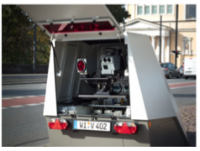 The Mobile Enforcement Trailer is usable in places where mobile speed enforcement units cannot be used due to space and infrastructure constraints, and potential risks to enforcement operators. Examples of such places include construction sites and road bends which have poor visibility of oncoming traffic and pose a greater risk for collisions. It enables long-term or permanent automated speed enforcement at accident hotspots that lack the infrastructure required for a fixed speed camera. It offers a minimum five days of 24-hour operation, built-in modem for wireless data transmission case and remote access, and well protected against vandalism with bullet-proof exterior and alarm system
The Mobile Enforcement Trailer is usable in places where mobile speed enforcement units cannot be used due to space and infrastructure constraints, and potential risks to enforcement operators. Examples of such places include construction sites and road bends which have poor visibility of oncoming traffic and pose a greater risk for collisions. It enables long-term or permanent automated speed enforcement at accident hotspots that lack the infrastructure required for a fixed speed camera. It offers a minimum five days of 24-hour operation, built-in modem for wireless data transmission case and remote access, and well protected against vandalism with bullet-proof exterior and alarm system
8. Electronic Vehicle Registration
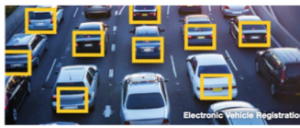 supply and implement the technology that allows electronic registration of vehicles to give them digital identification in the transportation database. The e-registration does not replace the original licence number registration, but provides a digital centralized management of vehicle registration data and database for efficient monitoring of vehicles for compliance and validation requirements for a vehicle to be on the road, such as vehicle legal status, use of vehicle, confirmation of ownership, compliance, revenue and data collection and prosecution in the event of traffic offence. We help build a national database for vehicles in the country.
supply and implement the technology that allows electronic registration of vehicles to give them digital identification in the transportation database. The e-registration does not replace the original licence number registration, but provides a digital centralized management of vehicle registration data and database for efficient monitoring of vehicles for compliance and validation requirements for a vehicle to be on the road, such as vehicle legal status, use of vehicle, confirmation of ownership, compliance, revenue and data collection and prosecution in the event of traffic offence. We help build a national database for vehicles in the country.
9. Mobile Number Plate Recognition
 Ensuring the safety of citizens has become an increasingly complex task for authorities. Ever changing security threats and security statuses require an immediate response. As a result, there is high demand by the Police Force for modern equipment to rapidly meet these challenges.
Ensuring the safety of citizens has become an increasingly complex task for authorities. Ever changing security threats and security statuses require an immediate response. As a result, there is high demand by the Police Force for modern equipment to rapidly meet these challenges.
 Our mobile, high-performance automatic number plate recognition (ANPR) system offers ability to automate wanted vehicle searches and response immediately to any identified matches. It can be installed on top of a patrol car. Integrated within a state-of-the-art police lightbar system, it captures passing vehicles and automatically reads their number plates. Capturing and reading the number plates of vehicles can be performed whether the patrol vehicle is parked or moving at full speed. Both lanes to the right and left of the patrol car are simultaneously monitored. Additional side-view cameras allow a parked car’s number plates to be processed when passing by. The system can also be equipped with additional video surveillance.
Our mobile, high-performance automatic number plate recognition (ANPR) system offers ability to automate wanted vehicle searches and response immediately to any identified matches. It can be installed on top of a patrol car. Integrated within a state-of-the-art police lightbar system, it captures passing vehicles and automatically reads their number plates. Capturing and reading the number plates of vehicles can be performed whether the patrol vehicle is parked or moving at full speed. Both lanes to the right and left of the patrol car are simultaneously monitored. Additional side-view cameras allow a parked car’s number plates to be processed when passing by. The system can also be equipped with additional video surveillance.
10. Traffic Data Collection & Analytics
We deploy Specialized Video Traffic Data Collection Cameras to collect traffic data at road intersections, junctions, roundabouts, roads, bus stops to assist traffic engineers to extract reliable data to plan intersections and black spots for traffic light operation, movement of vehicle, motor cycles, bicycles and pedestrians. It also helps governments to arrange resources on the roads, at bus stops, train stations, traffic lights, intersections.
We provide stakeholders with relevant insights for the improvement of traffic flow, prevention of collisions and congestions, planning transportation interventions, fare collection and tolls, response to traffic and security challenges on the roads real time, control of vehicle pollution impact.
11. Traffic Safety Devices
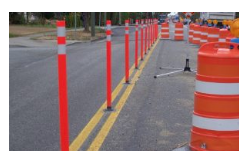 We supply, install and manage various safety devices and networks for the safety of pedestrians and vehicles at intersections, residential and commercial hotspot. Our goal always is to prevent accidents, collection and damage to assets. We have the capability to manage traffic enforcements and network linked to smart city traffic management backbone.
We supply, install and manage various safety devices and networks for the safety of pedestrians and vehicles at intersections, residential and commercial hotspot. Our goal always is to prevent accidents, collection and damage to assets. We have the capability to manage traffic enforcements and network linked to smart city traffic management backbone.
12. Parking Pay Station
 Strada Parking Multi-use kiosk with robust functionality and customizable features to suit the needs of any municipality. Designed for outdoor unattended environments and proven around the globe, the Strada can withstand any climate. Strada can be placed anywhere because it is built to run on solar power and connects wirelessly to Parkeon’s web-based parking management suite via cellular networks.
Strada Parking Multi-use kiosk with robust functionality and customizable features to suit the needs of any municipality. Designed for outdoor unattended environments and proven around the globe, the Strada can withstand any climate. Strada can be placed anywhere because it is built to run on solar power and connects wirelessly to Parkeon’s web-based parking management suite via cellular networks.
Strada features a full colour display screen and customizable capacitive keyboard guiding the end user through the transaction process step by step. Strada can be configured to take payments for a variety of products and services including parking, transit tickets, boat launches, beach passes, and admission fees. Strada can also be used to communicate about upcoming events and promote local merchants.
Strada can be configured to accept many different types of payments, such as coins, tokens, bills, credit/debit/ smart cards and contactless/NFC payments.
